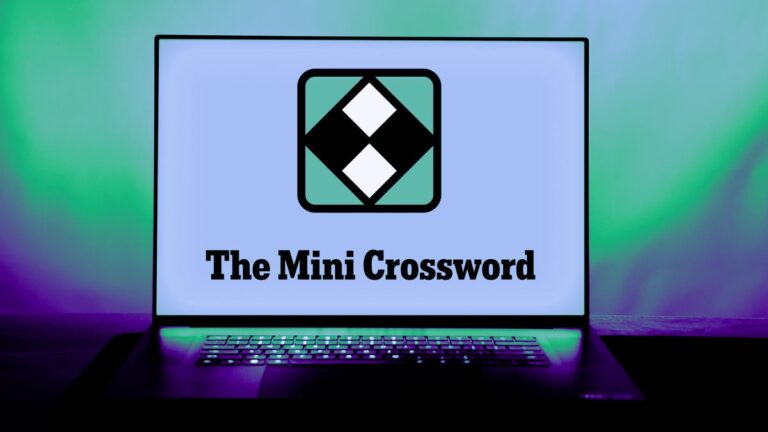Take part in our daily and weekly newsletters to get the latest updates and exclusive content for reporting on industry -leading AI. Learn more
The race for the expansion of large voice models (LLMS) over the million token threshold has lit a violent debate in the AI community. Models like Minimax-Text-01 Pretense of a capacity of 4 million Gemini 1.5 Pro Can process up to 2 million tokens at the same time. They now promise changing applications and can analyze entire code bases, legal contracts or research work in a single inference call.
At the heart of this discussion is the context length – the amount of text that a AI model can process and also remember at once. A longer context window enables A Model of machine learning (ML) To treat a lot more information in a single request and reduce the need for documents in underdocuments or columns of conversations. For the context, a model with a 4 million capacity could digest 10,000 pages of books at once.
In theory, this should mean a better understanding and more sophisticated argument. But translate these massive context windows into the real business value?
If companies weigh the costs for the scaling infrastructure against potential productivity and accuracy results, the question remains: Do we unlock new boundaries in AI argument or stretch the limits of the token storage without meaningful improvements? This article examines the technical and economic compromises, benchmarking challenges and developing corporate workflows that the future of design Large context-lillms.
The rise of large context window models: hype or real value?
Why do AI companies run to expand the context lengths
KI executives such as Openaai, Google Deepmind and Minimax are in a set of arms to expand the context length, which corresponds to the amount of text that a AI model can process at once. The promise? Deeper understanding, fewer hallucinations and seamless interactions.
For companies, this means AI that analyze entire contracts, debugging large code bases or summarizing long reports without breaking the context. The hope is that the elimination of problem expenses such as chunking or the access generation (RAG) can make Ki-Workflows more smooth and efficient.
Solving the problem “needle-in-a-haystack”
The problem of needle-in-a-Haystack relates to the identification of critical information (needle) from AI, which is hidden in massive data records (Haystack). LLMS often miss important details, which leads to inefficiencies in:
- Search and knowledge call: AI assistants have difficulty extracting the most relevant facts from huge document repositors.
- Law and compliance: Lawyers have to pursue clause dependencies across long contracts.
- Enterprise Analytics: Financial analysts are missing crucial knowledge in reports.
Larger context windows help to keep more information and possibly reduce hallucinations. They help to improve accuracy and also activate:
- Checks of Compliance Compliance Compliance: A single 256k entry request can analyze a whole policy manual against new laws.
- Medical literary synthesis: researchers Use 128k+ tokens Windows for comparison of drug experiments in decades of studies.
- Software development: Debugging improves when AI can scan millions of code lines without losing dependencies.
- Financial research: Analysts can analyze complete winning reports and market data in a query.
- Customer support: Chatbots with longer memory provide more context -related interactions.
Increasing the context window also helps the model to better refer the relevant details and reduce the likelihood of generating incorrect or manufactured information. A 2024 Stanford study found that 128k-filled models reduced the hallucination rates compared to rag systems when analyzing fusion agreements by 18%.
However, Early Adopters have reported some challenges: The research of JPmorgan Chase Shows how models do badly in about 75% of their context, whereby the performance had almost zero in complex financial tasks over 32,000 tokens. Models still have to struggle with the long -term recall and often prioritize the latest data from deeper knowledge.
This raises questions: a 4 million-squared window really promotes the argument or is it just a costly expansion of memory? How much of this huge input does the model actually use? And the advantages outweigh the rising computing costs?
Cost vs. Performance: RAG vs. Large input requests: Which option gains?
The economic compromises when using rags
RAG combines the performance of LLMS with a call system to access relevant information from an external database or a document memory. This enables the model to generate answers that are based on both existing knowledge and dynamically accessed data.
How to say goodbye AI for complex tasksYou are faced with a key decision: Use massive input requests with large context windows or rely on RAG to dynamically access relevant information.
- Large input requests: Models with large token-windows process everything in a single pass and reduce the need to maintain external call systems and to record cross-documented insights. However, this approach is mathematically expensive, with higher inference costs and memory requirements.
- RAG: Instead of processing the entire document at the same time, RAG only calls the most relevant parts before generating an answer. This reduces the use and costs for the tokens and makes it more scalable for real applications.
Comparison of the AI inferz costs: multi-stage calls compared to large individual requests
While large input requests work workflows, they require more GPU stream and storage, which makes them costly. Approaches, although they require several calls, often reduce the overall token consumption, which leads to lower inference costs without sacrificial accuracy.
For most companies, the best approach depends on the application:
- Do you need a deep analysis of documents? Large context models can work better.
- Do you need a scalable, inexpensive AI for dynamic queries? LAG is probably the more intelligent choice.
A large context window is valuable if:
- The full text must be analyzed immediately (e.g. contract reviews, code audits).
- Minimizing abuffurers is crucial (e.g. regulatory compliance with regulatory compliance).
- The latency is less worrying than accuracy (e.g. strategic research).
Via Google Research, stock models with 128k-crossed Windows, which analyze 10 years of income transcripts for 10 years overflow by 29%. On the other hand, the internal tests of Github Copilot showed that 2.3x faster task Completion against rags for Monorepo migrations.
Remove the decreasing returns
The limits of large context models: latency, costs and user -friendliness
While large context models offer impressive skills, there are limits for how much additional context is really advantageous. If context windows are expanded, three key factors will come into play:
- Latz: The more tokens a model processes, the slower the conclusion is. Larger context windows can lead to significant delays, especially if real -time words are required.
- Costs: With each other processed token, the computing costs increase. The scaling of infrastructures for dealing with these larger models can become unaffordable, especially for companies with highly volume workloads.
- Usability: When the context grows, the model’s ability to effectively concentrate on the most relevant information is reduced. This can lead to inefficient processing, in which less relevant data influence the performance of the model, which means that both accuracy and efficiency reduce the return.
Google Infinite technical attention tries to compromise these compromises by saving compressed representations of the context of any length with limited memory. However, compression leads to loss of information, and models have difficulties to compensate for direct and historical information. This leads to performance deterioration and cost increases compared to conventional rags.
The context window -arms need a direction
While 4m-crossed models are impressive, companies should use them more as special tools than universal solutions. The future lies in hybrid systems that adaptively choose between rags and large input requests.
Companies should choose between large context models and rags based on complexity, costs and latency of reasoning. Large context windows are ideal for tasks that require a deep understanding, while RAG is cheaper and efficient for simpler, factual tasks. Companies should set clear cost limits such as $ 0.50 per task because large models can be expensive. In addition, large input requests are better suited for offline tasks, while RAG systems are characterized in real-time applications that require quick answers.
Emerging innovations like Graphrag Can further improve these adaptive systems by integrating knowledge graphs into conventional vector call methods that better absorb complex relationships, improve nuanced thinking and answer precision by up to 35% compared to vector approaches. The latest implementations of companies such as Lettria have shown a dramatic improvement of the accuracy of 50% with conventional rags to more than 80% using Graphrag in hybrid call systems.
As Yuri Kuratov warns: “The expansion of context without improving the argument is like building wider motorways for cars that cannot control.The future of AI is in models that really understand relationships over any context size.
Rahul Raja is an engineer for rod software at LinkedIn.
Advitya Gemawat is an engineer for machine learning (ML) at Microsoft.
Source link









